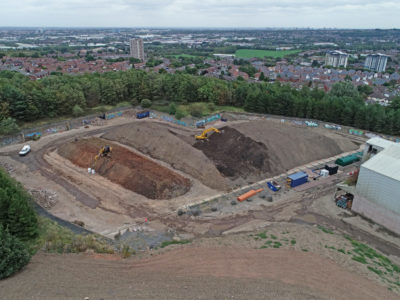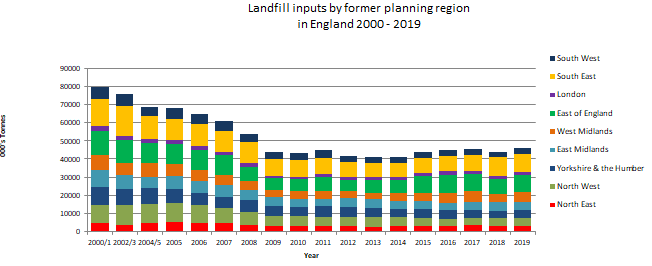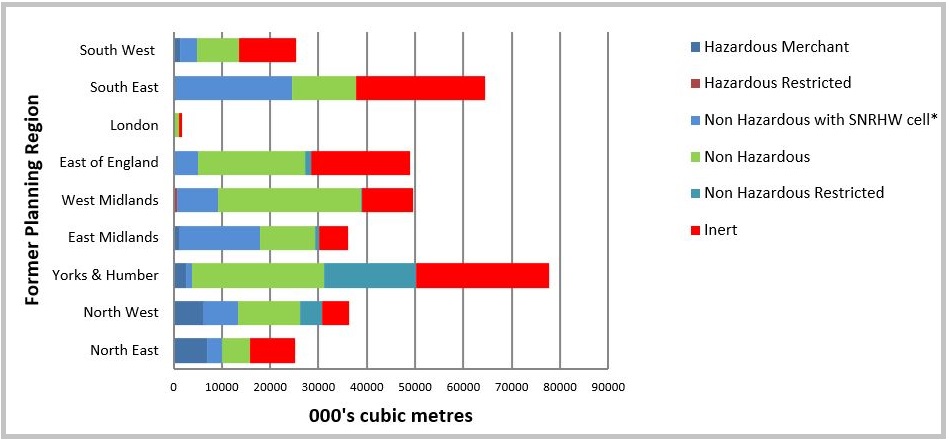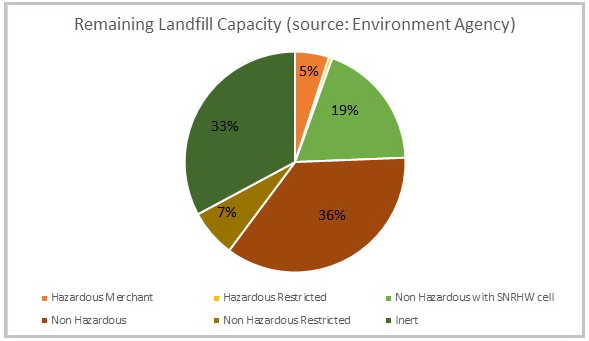This represents an increase of around 1.8 million tonnes from 2018, when 44,079,000 tonnes was sent to landfill.

While the amount of waste sent to landfill in England has remained relatively stable since 2009, the figure for 2019 is the highest since 2008. The national hike was partly the result of a jump in the amount landfilled in the East of England.
More waste was landfilled in the East of England and the South East than anywhere else, at 9,553,000 tonnes and 9,572,000 tonnes respectively. In 2018, the East of England sent only 8,560,000 tonnes to landfill, just under a million tonnes less than in 2019.
Though the figures for 2019 were higher than any other point in the past decade, overall the amount of waste landfilled in England has fallen considerably since 2000/2001. That year, 79,923,000 tonnes of waste was landfilled. From then, tonnages decreased steadily year-by-year until 2010, before remaining at around the same level.

Permits
In terms of the number of sites, at the end of 2019 there were 533 landfills with an environmental permit and 310 that had accepted waste. Forty-nine of these were in the East of England and 57 in the South East.
Of the waste landfilled in England in 2019, 865,000 tonnes was deemed hazardous; 27,017,000 tonnes non-inert; 17,465,000 tonnes inert; and 512,000 tonnes ‘restricted user’.
According to the Environment Agency, in 2019 a total of 5,900,000 tonnes of hazardous waste was ‘managed’. Of this, 15% was landfilled.
Capacity
The squeeze on landfill capacity continues. It fell by nearly 40 million cubic metres (m3) between 2018 and 2019. In 2018, England had a landfill capacity of 405 million m3, whereas in 2019 this fell to 365 million m3.
In 1998/99, the landfill void was 724 million m3, nearly twice as much as it is now.
Of the remaining landfill capacity in the UK, 36% is listed as being for non-hazardous waste and 33% for inert waste.
Landfill capacity figures have been of recent and current interest because of Brexit. In October 2019 Defra officials said they were confident the UK would have sufficient landfill capacity to cope with any disruption to waste shipments from a no-deal Brexit (see letsrecycle.com story).
Regions
In regional terms, the Environment Agency data shows that Yorkshire and the Humber had greater landfill capacity than any other in England in 2019, at 73 million m3. The region had capacity for 27 million m3 of non-hazardous waste and 25 million m3 of inert waste.

Another region with significant landfill capacity in 2019 was the South East, at 64 million m3. It had capacity for 27 million m3 of inert waste and 24 million m3 of non-hazardous waste with a cell of stable non-reactive hazardous wastes (SNRHW). Some non-hazardous sites can accept some SNRHW into a dedicated cell, but this is usually a small part of the overall capacity of the site.
The East and West Midlands were also regions with significant landfill capacity. The East of England, the region that landfilled the second most waste, has capacity of 49 million m3.
As would be expected, London had the smallest landfill capacity of any region in England, at 2 million m3. It only has capacity for non-hazardous and inert wastes.
Related link









Subscribe for free